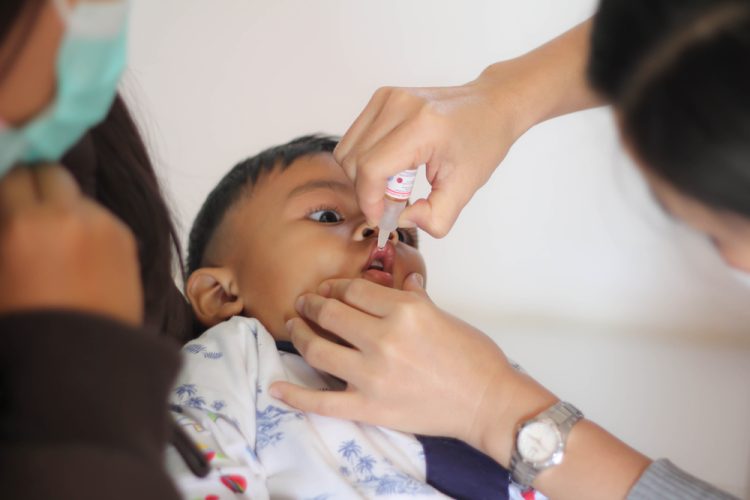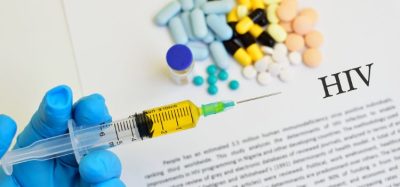4mn dose shortage of GSK’s childhood rotavirus vaccine expected
Posted: 15 August 2022 | Hannah Balfour (European Pharmaceutical Review) | No comments yet
With vaccination programmes fighting to recover after the pandemic fuelled the “largest backslide” in three decades, GSK says manufacturing challenges will leave a shortage of rotavirus vaccines.


According to Reuters, Kenya, Tanzania, Senegal and Cameroon have either run out of or are close to running out of vaccines to protect children against the deadly rotavirus infection following undisclosed “manufacturing challenges” at GSK.
Rotaviruses are the most common cause of severe diarrhoeal disease in infants and young children worldwide, according to the World Health Organization (WHO), which estimates that up to 200,000 children die each year of the highly contagious infection.
GSK has confirmed that there will both be delays in delivery and a shortfall of around four million doses of its Rotarix vaccine this year, with a drop to 42 million from an expected 46 million. According to GAVI – the Vaccine Alliance, the drug maker had already agreed to cut its deliveries of rotavirus vaccine by 10 million a year between 2022 and 2028.
Reuters reported that GSK had acknowledged the fall in supply and said it was pursuing plans to address the deficit. “GSK communicated to GAVI earlier this year on manufacturing challenges leading to an unplanned, short-term drop in Rotarix production for 2022, for which priority mitigation plans are fully in place,” stated the publication.
GSK did not comment on what the challenges were nor how they were being rectified, though there is speculation that they may be due to staffing shortages caused by the COVID-19 pandemic.
The pharma giant is not the only company facing challenges in the area, GAVI has also been warned of delays with Bharat Biotech’s rotavirus vaccine, Rotavac. Though the problem is not anticipated to be as significant, the company reported it was due to “regulatory procedures”.
Just last month, UNICEF reported that the COVID-19 had fuelled the “largest continued backslide in vaccinations in three decades”. The organisation sounded the alarm as figures revealed that just 81 percent of children received three doses of the DTP3vaccine against diphtheria, tetanus and pertussis in 2021 – a marker for immunisation coverage. According to UNICEF, this means that 25 million children missed out on one or more doses of DTP3 through routine immunisation services in 2021 alone. This is two million more than in 2020 and six million more than in 2019, “highlighting the growing number of children at risk from devastating but preventable diseases”.
UNICEF further reported that 18 million children that did not receive a single dose of DTP3 during the year, the vast majority of whom live in low- and middle-income countries, with India, Nigeria, Indonesia, Ethiopia and the Philippines recording the highest numbers.
It was hoped that 2021 would be a year of recovery during which strained immunisation programmes would rebuild and the cohort of children missed in 2020 would be caught-up. Instead, DTP3 coverage was set back to its lowest level since 2008 which, along with declines in coverage for other basic vaccines, pushed the world off-track to meet global goals, including the immunisation indicator for the Sustainable Development Goals.
“We are witnessing the largest sustained drop in childhood immunisation in a generation. The consequences will be measured in lives,” commented Catherine Russell, UNICEF Executive Director. “While a pandemic hangover was expected last year as a result of COVID-19 disruptions and lockdowns, what we are seeing now is a continued decline. COVID-19 is not an excuse. We need immunisation catch-ups for the missing millions or we will inevitably witness more outbreaks, more sick children and greater pressure on already strained health systems.”
Other vaccination programmes were also in decline:
- More than a quarter of the coverage of human papillomavirus (HPV) vaccines, that was achieved in 2019 had been lost, meaning global coverage of the first dose of HPV vaccine is now just 15 percent (HPV vaccines protect girls against cervical cancer later in life)
- First dose measles coverage dropped to 81 percent in 2021, the lowest level since 2008, meaning 24.7 million children missed their first measles dose in 2021, 5.3 million more than in 2019. A further 14.7 million did not receive their needed second dose
- Compared to 2019, 6.7 million more children missed the third dose of polio vaccine and 3.5 million missed the first dose of the HPV vaccine – which protects girls against cervical cancer later in life.
UNICEF also reported that now “monumental efforts will be required to reach universal levels of coverage and to prevent outbreaks”.
“It is heart-breaking to see more children losing out on protection from preventable diseases for a second year in a row. The priority of the Alliance must be to help countries to maintain, restore and strengthen routine immunisation alongside executing ambitious COVID-19 vaccination plans, not just through vaccines but also tailored structural support for the health systems that will administer them,” said Dr Seth Berkley, CEO of GAVI, the Vaccine Alliance.
Related topics
Big Pharma, Biologics, Drug Manufacturing, Immunisation, Supply Chain, Vaccines, Viruses
Related organisations
GAVI-the Vaccine Alliance, GSK, The World Health Organization (WHO)









